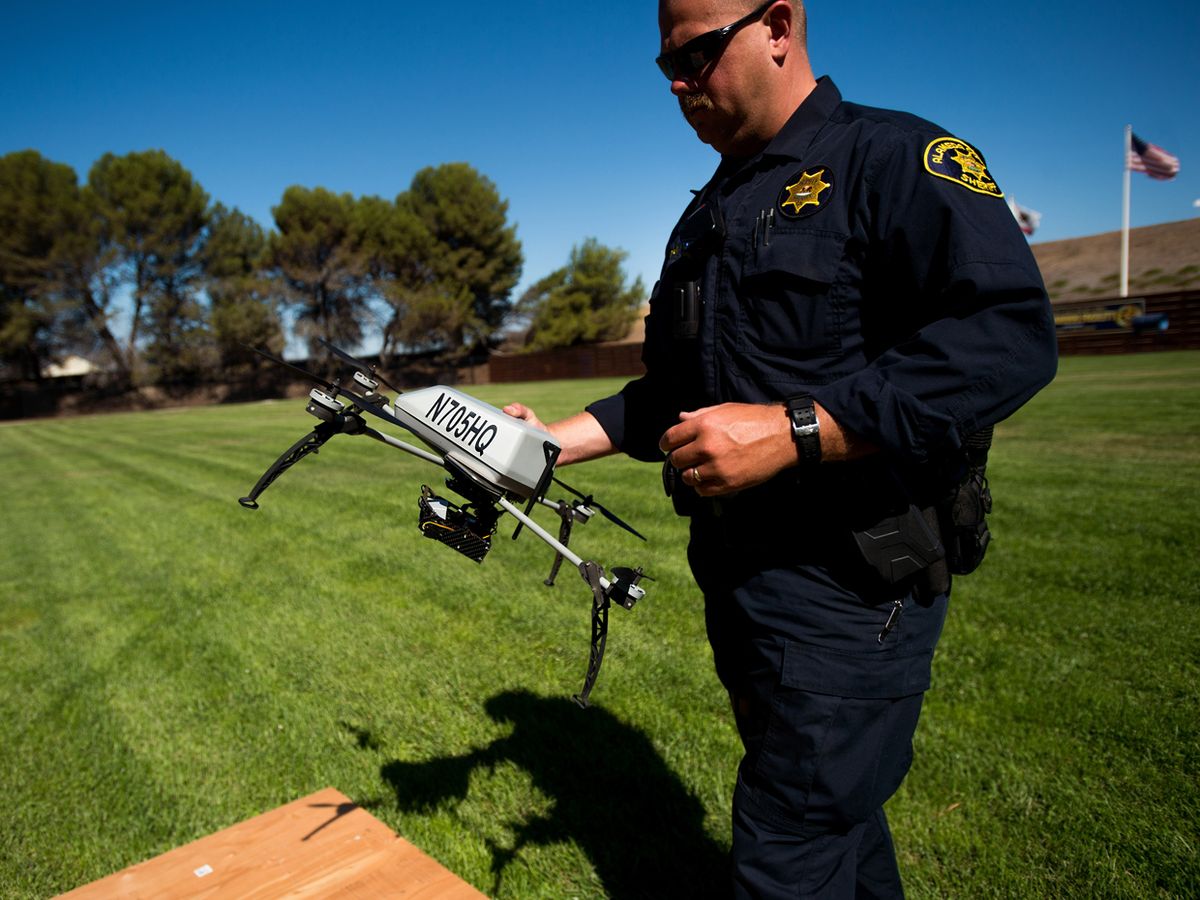Four years ago, Alameda County, California’s purchase of two drones for use by law enforcement was controversial. Now, the Alameda County Sheriff’s Department has six drones, and their use is routine. So said Tom Madigan, a commander at the Alameda Sheriff’s Office, to drone industry representatives and other law enforcement officials gathered at Drone World Expo in San Jose, Calif., last week.
The Alameda County drone program has been fully operational for only about two years, Madigan said. In that time, he indicated, the Alameda Sheriff’s Office has flown drones 700 times as part of 175 real-world missions, including search and rescue, fire scene surveillance, homicide scene analysis, and providing eyes in the sky during high-risk tactical operations.
Madigan showed stunning drone videos captured during a number of recent operations (photography of these videos, unfortunately, was prohibited). As a Bay Area resident, I had some knowledge of the crisis situations described because they had been reported on the local news. However, I had had no idea of the roles drones had played in the police response.
Drones, Madigan reported, helped scan the inaccessible Big Sur coastline during a recent search for a missing 17-year-old boy (who was later found drowned). A drone that was monitoring efforts to put out a fire engulfing a 100-plus-unit apartment building spotted a secondary fire sparked by embers some distance away, helping firefighters get to that fire quickly. Drones were also used to survey the scene of the Ghost Ship fire; they gathered footage used to help create a 3D model. One of these tiny aircraft helped hunt for a vehicle that disappeared in a river; from the images Madigan presented, I believe that hunt referred to an 18-year-old woman reported missing in January’s heavy rains along Niles Canyon Road.
And, in the most stunning video in Madigan’s collection, a drone was used during a narcotics raid on a home in east Oakland. The drone hovered over the house before the police arrived. The video showed a police car pulling up, and the people in the house beginning to flee. It catches them tossing guns and packages of narcotics over fences and onto the rooftop, simplifying the job of police attempting to collect all the contraband, and providing a clear evidence trail for prosecutors. The drone then followed the fleeing suspects, one slowed briefly by a neighbor’s dog. Meanwhile, the police ignored the fugitives for the moment, while officers continued to search the house, knowing the drone would allow them to find the criminals later. The drone video showed the suspects slowing and starting to walk normally, believing they had eluded pursuit, but all the while the drone tracked them. Eventually, the eye in the sky guided two patrol cars to the suspects’ location. The officers easily surrounded the fugitives.
Other law enforcement officers speaking at the expo talked about hunting for lost hikers, surveilling accident scenes, and, with the addition of spectral cameras, spotting marijuana growing.
But after Madigan’s video, the conference attendees didn’t need much more convincing that law enforcement agencies should be using drones. Charles Werner, Acting Deputy State Coordinator of Disaster Services at Virginia’s Department of Emergency Management, pointed to recent contributions of drones to public safety outside of the Bay Area.
“In Charlottesville, a drone caught a picture of the car that killed the young lady,” he said. “In a recent protest march that went into areas that hadn’t been permitted for or predicted, a drone allowed police to be at every intersection and manage that march.”
William Seymour from the Tulare County Sheriff’s Department pointed out that drone use can also eliminate the need for risky, high-speed chases. “A guy is at high speed because we are chasing him. If we stop chasing him, but instead have a UAV 500 feet up in the air, we can see where he goes; that is what is important.”
“We are negligent if we aren’t using drones,” says Werner. “Not just for law enforcement, but, say, for looking for sharks along a coastline. With the expense of drones so low, for $2000 you can have a drone operation,” Werner added.
Seymour says drones should be thought of in the same way as police dogs. Tulare County, he says, treats drones like a canine unit; they travel in specially marked cars as officers go about normal duties, then the team is called in as necessary. And, like canine crews, sometimes the officers involved take a little extra time for public relations, Werner said, because public acceptance will be key. “If I have to spend five minutes after deployment talking to kids or giving a free demo,” he said, “I always will, because anything we can do to preserve our ability to use this tool we are going to do.”
Werner had some advice for the law enforcement attendees just beginning to add drones to their operations: “Do fire rescue, search and rescue, finding Alzheimer’s patients first,” he said. Publicity around these operations will help bring public opinion along.
Said Seymour: “The ultimate thing we are trying to do is save people’s lives, not see who is around your swimming pool.”
Tekla S. Perry is a former IEEE Spectrum editor. Based in Palo Alto, Calif., she's been covering the people, companies, and technology that make Silicon Valley a special place for more than 40 years. An IEEE member, she holds a bachelor's degree in journalism from Michigan State University.



